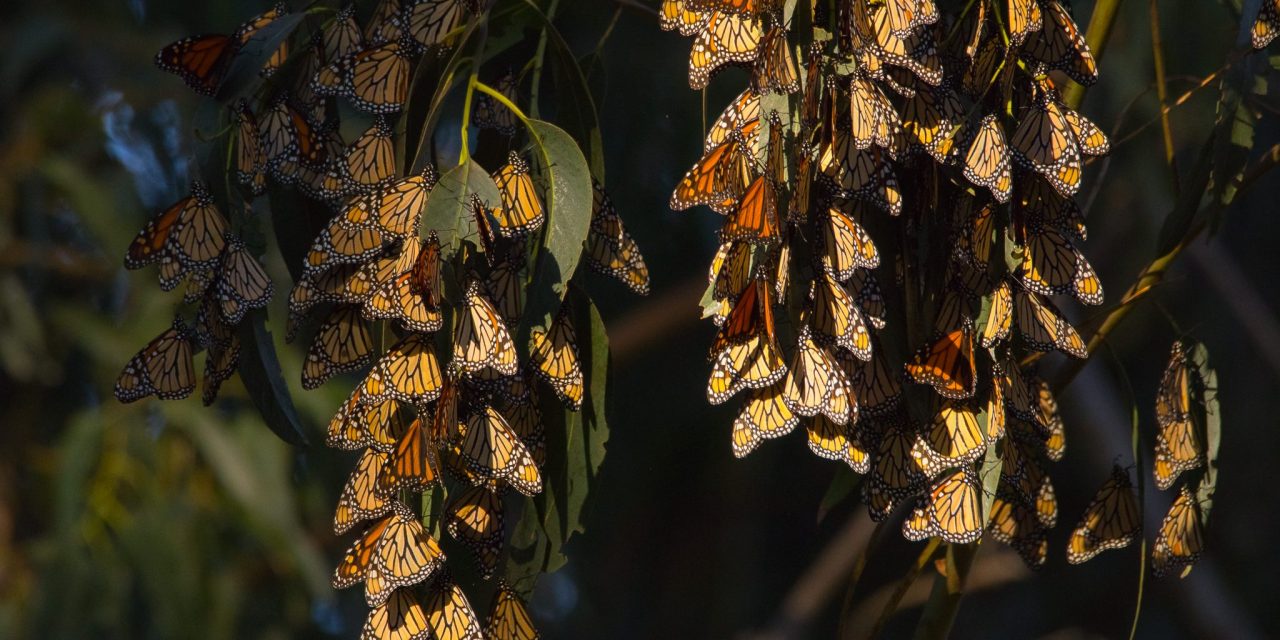The western monarch butterfly has been disappearing from the California landscape for decades.
NORTH COUNTY — Since the 1980s, the western monarch butterfly population has dropped from millions to under 30,000. The US Fish and Wildlife Service received a petition to place the insect on the endangered species list in 2014. The department’s determination if the species is endangered was moved back from 2019 to December 2020. Danielle Bronson State Park Interpreter III, who has worked on the Central Coast for over a decade, said that she had witnessed the drop in the dramatic decline in their numbers.
Each year counts are performed across the state by volunteers and park staff to determine population numbers of the butterflies called the Thanksgiving Count.
“The Thanksgiving count, which is led by the Xerces Society, [tries] to get a snapshot of the population, because monarchs are spread throughout the California Coast for the Western population,” said Bronson.

The western monarch migrates from Canada and, in some cases, all the way down to Baja California. Bronson said these counts focus on the wintering sites to produce an accurate number. According to the U.S. Forest Service, monarchs can travel between 50-100 miles a day; it can take up to two months to complete their journey. The farthest ranging monarch butterfly recorded traveled 265 miles in one day. Bronson said a New Years’ count was added to help further the accuracy of the numbers.
“There’s been a huge decline,” said Bronson, “and it’s hard to know 100% exactly what the issue is because they cover such a vast territory.”
Some possible leading causes Bronson listed were the loss of the insects’ natural habitat through human development, the elimination of nature milkweed groves that caterpillars feed on, and the failure of Eucalyptus plantation sites know as Stands. Milkweed is the only food the caterpillars eat.
Monarchs use the stands as wintering sites. During their long journey, the butterflies rest on Eucalyptus, where they hand off the leaves. Being coldblooded, the insects rely on specific microclimates to keep their body temperature optimal. When wintering, the butterflies cluster on eucalyptus trees for added protection from the environment. Each insect weighs less than a gram. However, their accumulative weight has broken branches according to the U.S. Forest Service.
During the early 1900s, the state government promoted the planting of the trees that originated from Australia. It tuned out the wood was ill-suited for commercial use. After 100 years, the eucalyptus stands are failing, and some have been removed and replaced with native plants.
The prolific use of insecticides in the commercial and public settings has dealt blows to then entire insect population. The journal Biological Conservation reported that “over 40 percent of insect species are threatened with extinction.”
Bronson explained the process of counting butterflies, saying the volunteers start in the morning because the colder temperatures help keep the insects from flittering about. Two-person teams perform the counts. Partners compute a chosen cluster individually before sharing the number with their teammate. If the amounts are within 20 percent of each other, they record the mean of the combined tallies and move to the next group. The tested counting process was developed by Dennis Frey (Ph.D. Emeritus, Cal Poly), who used to tag butterflies individually.
“He was able to test this costing method to find its accuracy,” said Bronson, “…he used the counting method beforehand and when he netted them down and counted them individually to verify whether that was a feasible count method of not.”
Bronson said she loves when people do the jellybean count at baby showers or bridal showers because she is usually the winner.
Along with bees, butterflies are important pollinators. Although monarch caterpillars only eat milkweed, their fluttering counterparts consume nectar from flowers. People wanting to help the insects can plant flowering plants and avoid planting tropical milkweed, which is not beneficial to the monarch Butterfly.
Xerces is hosting the Western Monarch Mystery Challenge to better understand where the monarch butterflies go during the spring month. To participate, take a photo of a monarch outside of its overwintering grove, Report it to iNaturalist (the app is free) and include species and location OR email it to MonarchMystery@wsu.edu. Participants are automatically entered to win a variety of prizes every week they report a sighting.
Photos by Brady Cabe











